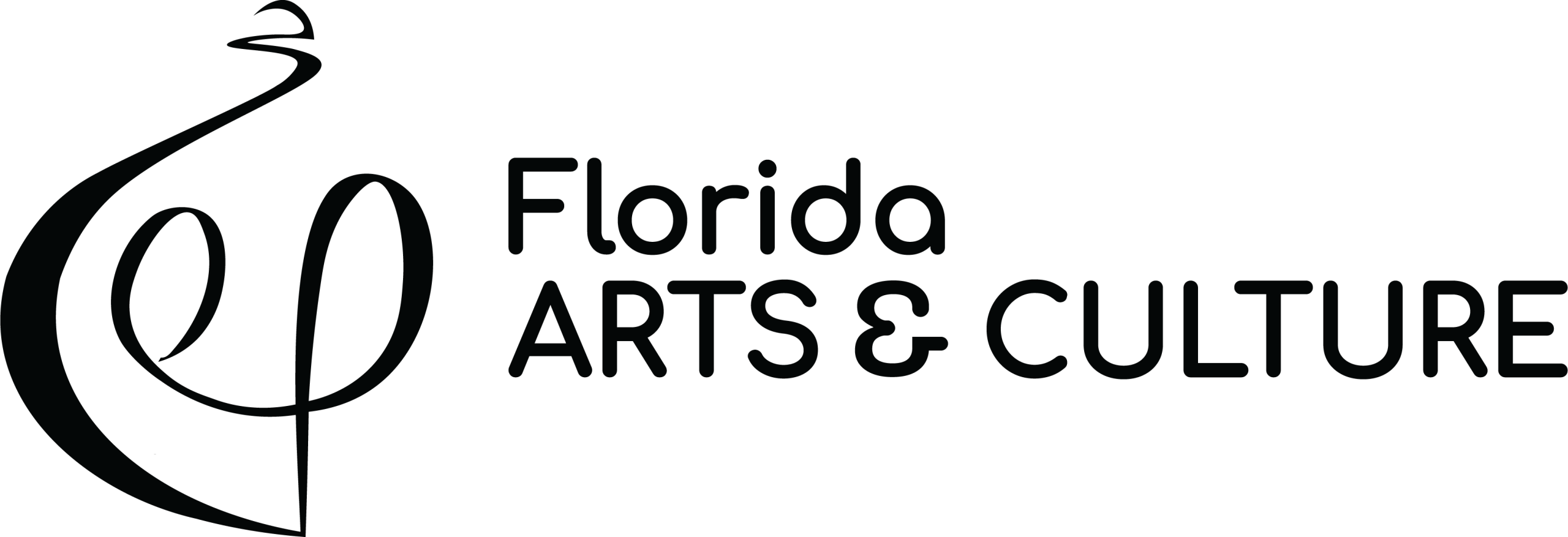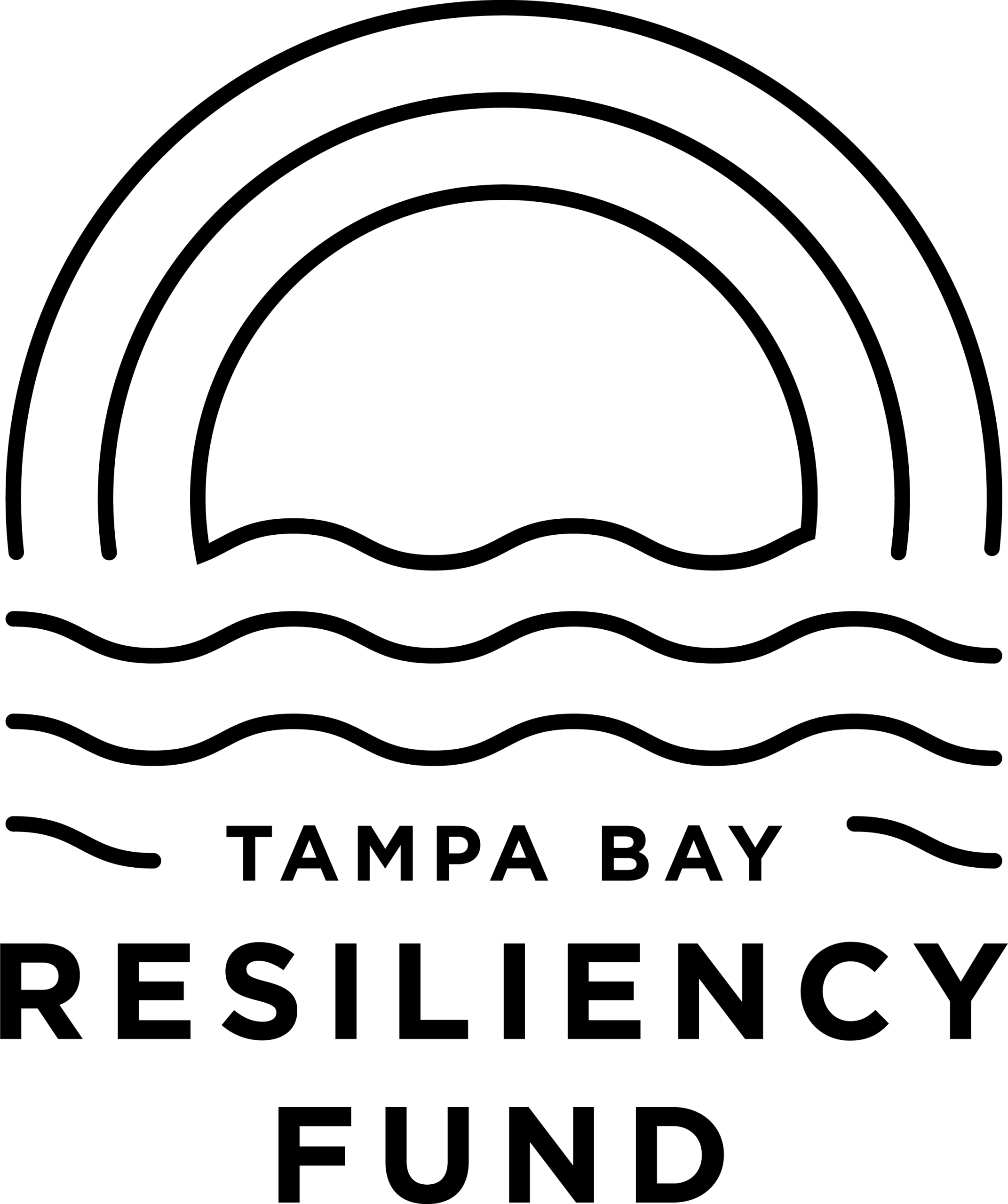By Margo Hammond
. . .
Stitch By Stitch
From African-American Pictorial Quilters
to Student Fashion Designers,
Fiber Artists Are Flourishing Here
The women in my family were fiber artists. They just didn’t know it.
My grandmother braided multi-colored rugs from discarded clothes. My mother created wearable art using her Singer sewing machine. Back then rug braiding and sewing as well as quilting, needlepoint, macrame, weaving, crocheting, knitting and embroidery were labeled women’s work, hobbies that housewives indulged in to stretch the family budget or just to pass the time.

In the 19th century, the Arts and Crafts Movement valiantly tried to elevate women’s handcrafts to the ranks of fine art, but sexism prevailed. Ever hear of May Morris? “May Morris — who was the daughter of William Morris, an important figure of the movement — was a skillful embroiderer and pioneering feminist figure but she never received the same recognition as her father because of her gender,” says Stefanie Graf in “The Feminist Revival of Embroidery,” her essay posted on the art site Hyperallergic.
Not until the 1970s when pioneer women (like Judy Chicago in her ground-breaking work The Dinner Party) began to use textiles, yarns and thread in their work did the tide turn. Now, says Graf, “a medium that was so clearly denounced as women’s work and therefore avoided by many artists in fear of being viewed as ‘feminine’ and ‘irrelevant’ is currently experiencing a revival.”
Evidence of the revival of fiber works as fine art — these are not your grandmother’s handicrafts — certainly has been seen all over Tampa Bay this year.
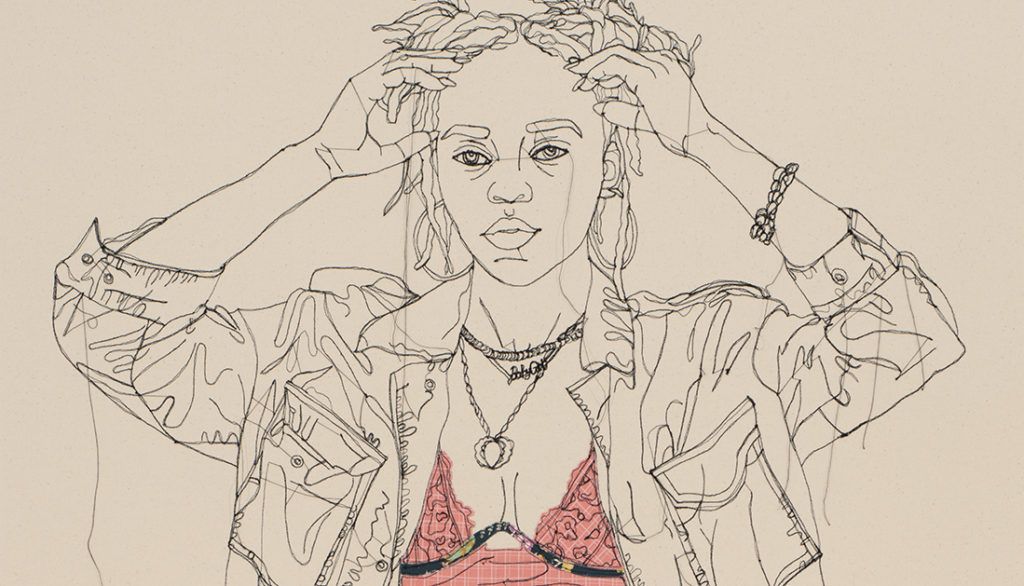
Gio Swaby: Fresh Up, the first solo museum exhibit by one of the country’s premier fiber artists, just closed at the Museum of Fine Arts. The museum acquired one of Swaby’s works for its permanent collection.
A stunning show of pictorial quilts by African American artist-quilters just opened at the James Museum. Black Pioneers: Legacy in the American West will be on display through January 8. You can even try your own hand at fiber arts – the museum is offering two quilting workshops by Florida quilters Lauren Austin and Gwendolyn Aqui-Brooks on October 22 and November 5. There’s a fabric collage workshop for Girl Scouts on October 22 as well.
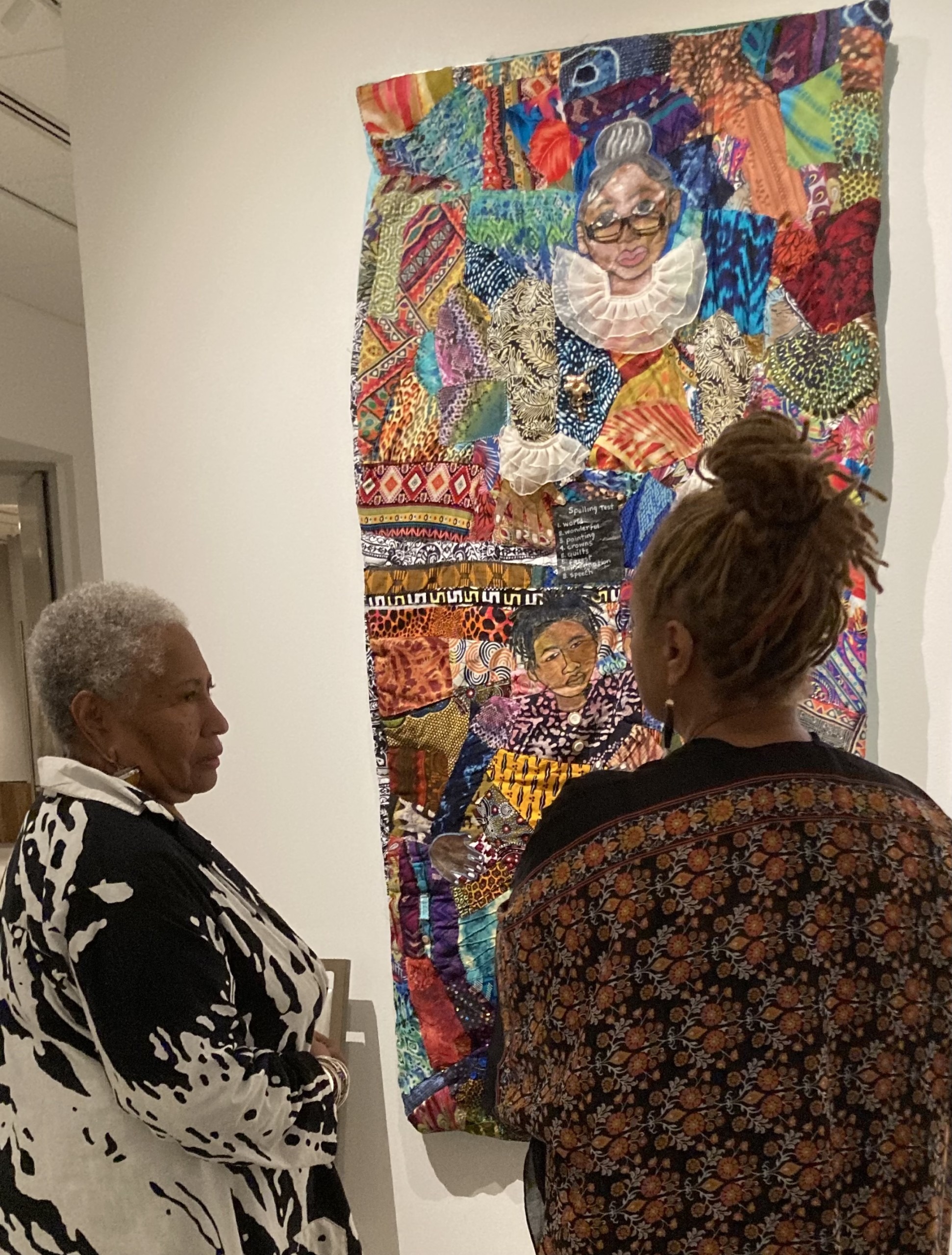
Several fiber artists based in the Tampa Bay area have been gaining national attention. This summer Gulfport resident Akiko Kotani was invited to participate in Fiber Arts International 2022. She contributed a massive ceiling-to-floor, cascading sculpture of crocheted polyethylene called Red Falls to the prestigious Pittsburgh show.
Babs Reingold of St. Petersburg currently has a solo exhibit in Tampa that uses silk organza and yarn to comment on the resilience of nature. Lost Trees runs through December 1 at Gallery221 at Hillsborough Community College.
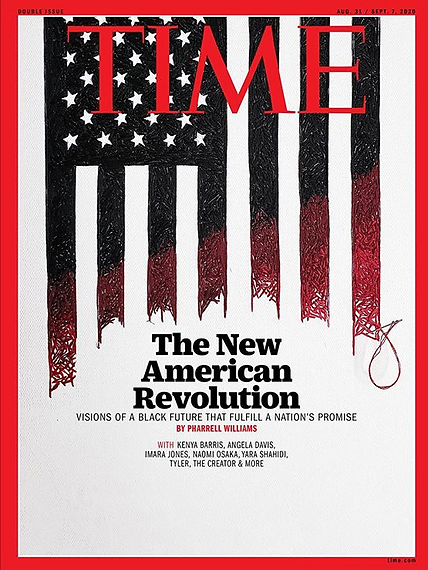
Two years ago at age 23, Nneka Jones ‘s fiber art appeared on the cover of TIME magazine. Now the University of Tampa grad’s embroidered portraits that call attention to the problems of child trafficking and sexual abuse are part of the permanent collections of the Florida CraftArt Gallery, Ferman Center for the Arts at the University of Tampa and the Tampa Museum of Art.
. . .
Displays of fashion design have also been on the Tampa Bay calendar this year. After a two year hiatus caused by the pandemic, the Dunedin Fine Arts Center’s 16th annual Wearable Art show finally was held in August. And on December 17 students currently attending the Dalí Museum’s free annual fashion design workshop will showcase their creations at Pinellas County Center for the Arts at Gibbs High School and again on February 9 at Neiman Marcus in Tampa’s International Plaza.
. . .
Here are more details about these
artistic fiber explosions in our area. . .
. . .
Gulfport-Based Akiko Kotani

Hawaii-born artist Akiko Kotani, who lives in Gulfport, has redefined fiber arts’ relationship to the fine arts with both massive, site-specific installation pieces and minimalistic stitched works. “Stitch by stitch, she integrates traditional women’s handcrafts into stunning contemporary artwork,” says art historian Rangsook Yoon, curator of modern art at Artis-Naples, The Baker Museum in Naples where Kotani recently exhibited.
Kotani’s early works were woven textiles, influenced by Mayan weaving techniques she learned while living in Guatemala. In works such as Red Rain and Views of the Bosphorus, she uses simple stitched lines and dots made with a needle like a painter to reflect the repetitive nature of women’s traditional domestic work.
In 2013 she began creating large-scale, site-specific installation pieces like White Falls (2019), using plastic trash bags crocheted like panels that fall from above and cascade down to the gallery floor.
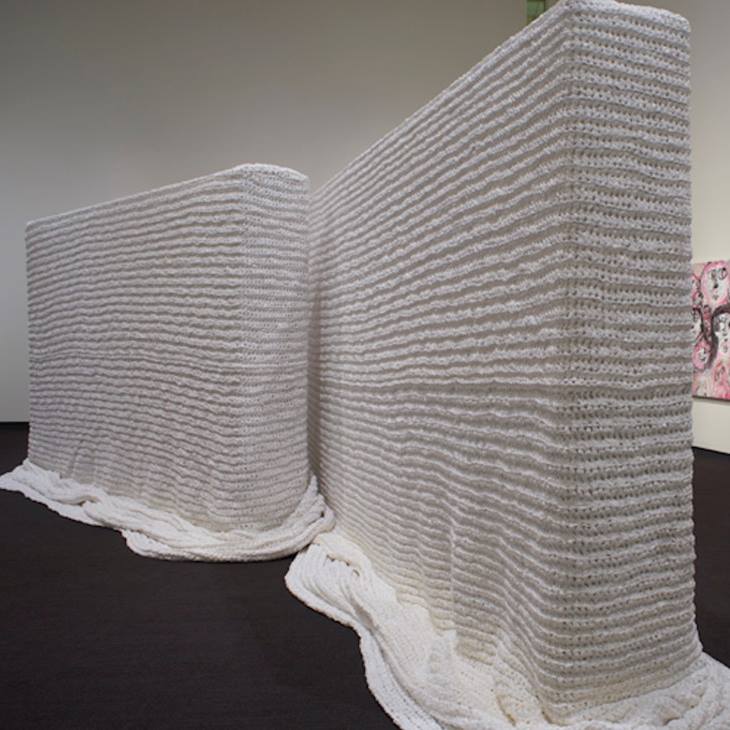
A professor emerita of art at Slippery Rock University of Pennsylvania, Kotani was named Pittsburgh Artist of the Year in 2013, and in 2019, Artist Laureate by Creative Pinellas. This summer she was invited to exhibit at Fiberart International 2022, the 24th in a series of juried exhibitions held in Pittsburgh, open to textile artists worldwide. She exhibited a piece called Red Falls, a cascade of crocheted polyethelene. Her work has been acquired by New York’s Metropolitan Museum of Art and the Cleveland Museum of Art.
. . .
St. Petersburg-Based Babs Reingold
at Gallery221

. . .
Born in Venezuela, Reingold specializes in combining assemblages, hand stitchings and appliqué graphite rubbings to create site-specific installations that explore environmental themes.
In an exhibit entitled Lost Trees on view at Gallery221 at Hillsborough Community College in Tampa from through December 1 she has assembled silk organza columns, paper bricks and yarn-wrapped tree limbs to create an environment that celebrates the beauty and resilience of trees and underlines their importance in combating the effects of climate change.
. . .
Black Pioneers: Legacy in the American West
at the James Museum
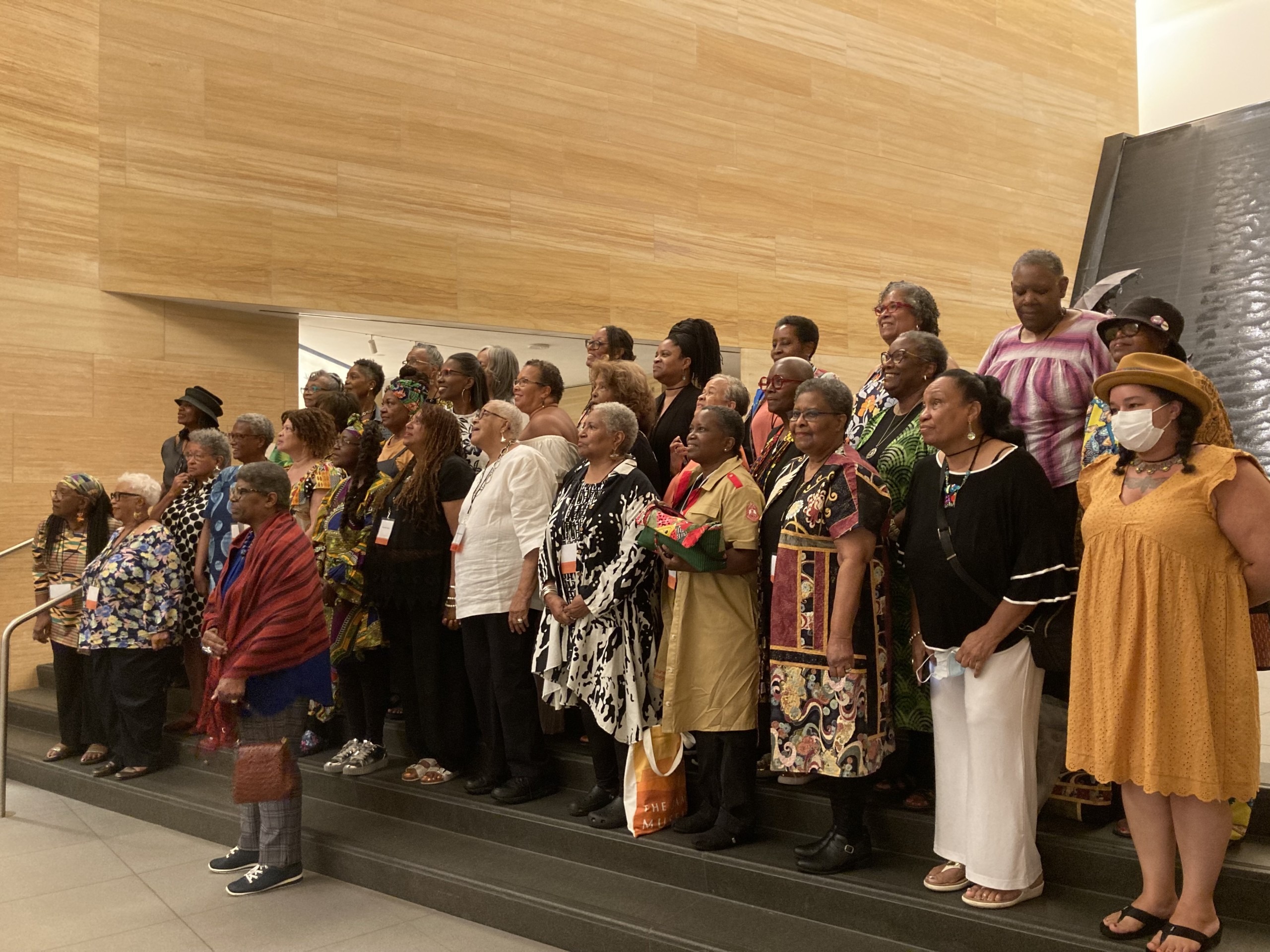
Black Pioneers: Legacy in the American West, a must-see quilt exhibit at the James Museum of Western and Wildlife Art in St. Petersburg, certainly challenges the notion that women’s work can’t be fine art. It also provides a crash course on the sweeping history of African Americans in the West.
The exhibit, which runs through January 8, is the first of its kind. All of the pictorial quilts on display were created by members of the Women of Color Quilters Network expressly for this show, curated by WCQN founder Dr. Carolyn Mazloomi. After January 8, this unique exhibition will travel to other museums across the country.
A catalog is available with images of all 50 art quilts in the exhibit and statements by the fiber artists who created them.
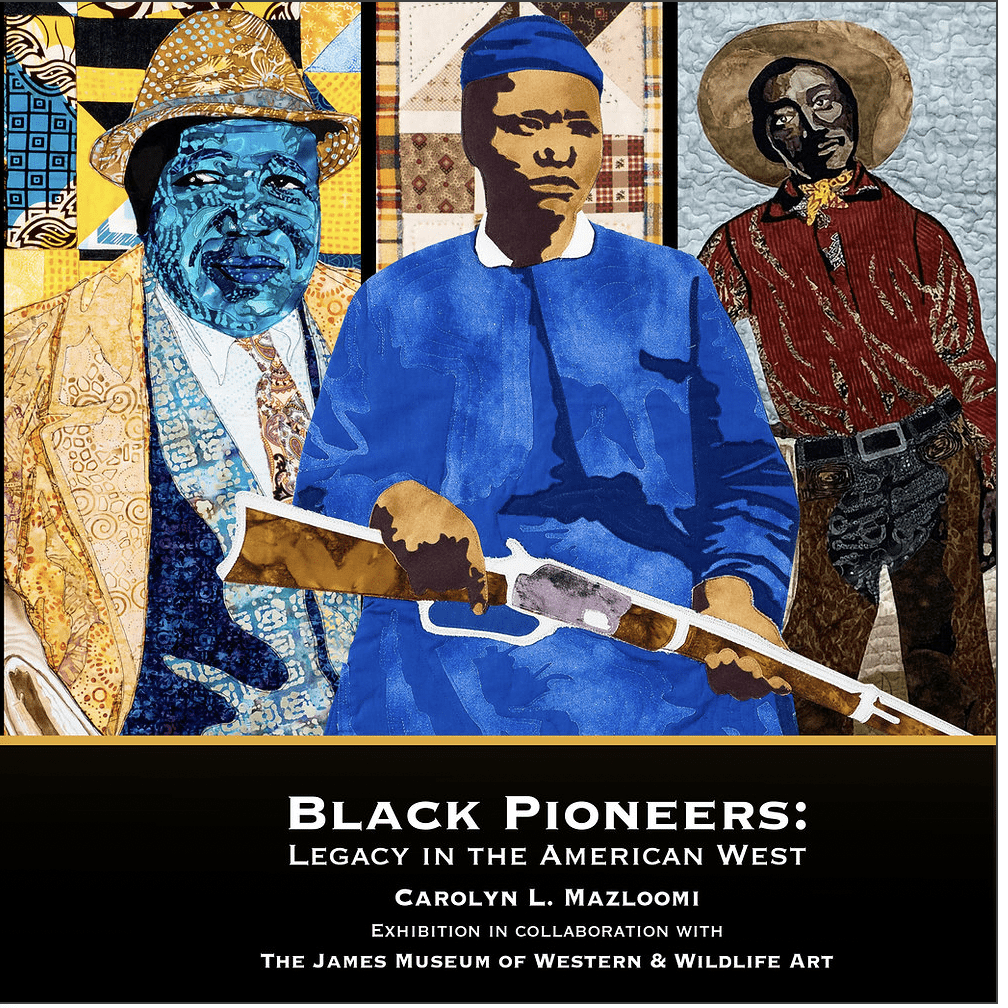
at the James Museum
Each quilt tells the story of an historical Black figure or a Black history event connected to the American West – from Ife Felix’s quilt telling the story of the enslaved African Esteban de Dorantes exploring the West in the 1500s to Ed Johnetta Miller’s quilt entitled Burn Baby Burn chronicling the Watts Riots of 1965.
“Not all these stories are necessarily known,” says Mazloomi. When the James Museum approached Mazloomi, an historian, asking for quilts with a Western theme, she had none to offer. So she compiled a list of historical Black figures connected to the West, sent it out to her network and invited them to contribute, letting each quilter choose which subject spoke to them the most.
There’s a quilt that honors Elijah Abel, the last African American to hold a role in the Mormon Church and one that tells the story of the enslaved York who played a role in the 1803 Lewis and Clark expedition. There’s Cathay Williams who disguised herself as a man to become a Buffalo in 1866 (she cleverly flipped her name and called herself William Cathay), George McJunkin who was one of the first archaeologists in America, and Bass Reeves, known as the Black Lone Ranger, one of the first African Americans to serve as a deputy U.S. Marshall west of the Mississippi.
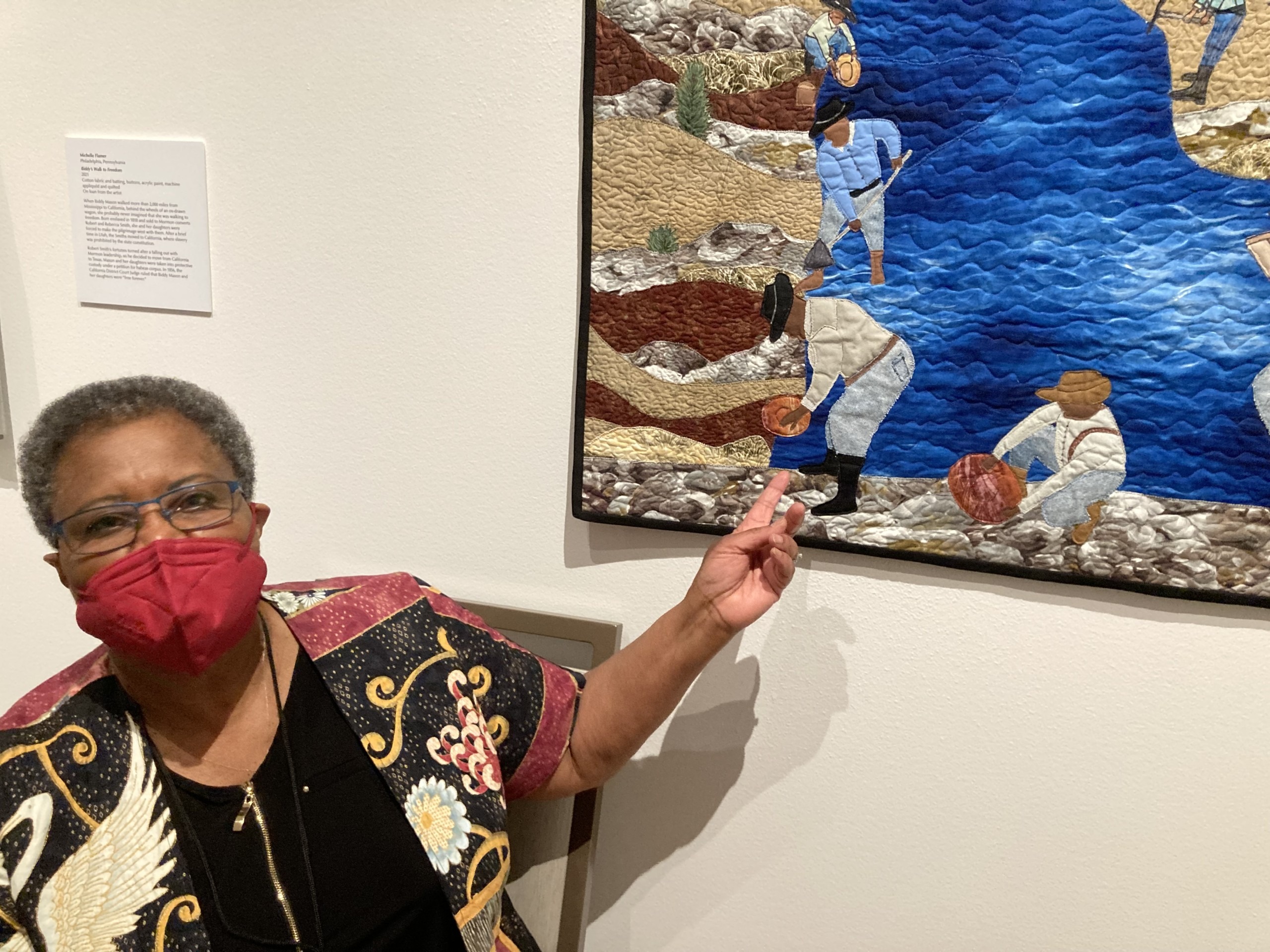
Quilter Connie Horne, a Californian, had her husband and son pose for her so she could create a quilt that told the story of Black Miners who worked a claim in Sacramento County in 1849.
My favorite quilt is called Stagecoach Mary. It tells the story of Mary Fields, born into into slavery, who became the second woman and first African American woman mail carrier. Yup, she used a stagecoach to deliver the mail out West and carried a rifle to make sure no one stole the mail. Oh, and she was six feet tall (“I always wanted to be tall,” says quilter Dorothy Burge, explaining why she chose Stagecoach Mary as her subject.)
“Quilts have jumped off the bed and onto the walls and now they are seen as works of art,” says Mazloomi. “The cloth can speak… with the use of cloth we tell the stories not only of our culture but of the making of America.”
The artists used mixed media techniques, sometimes incorporating a photograph, buttons, beads, tassels, twine or embroidery in their quilts to tell these stories of Blacks in the American West. In Gwendolyn Aqui-Brooks’ dazzling quilt (The Spelling Words), Elizabeth Thorn Scott Flood sports a pair of spectacles. Unable to enroll her son in a public school in Sacramento, Flood — who was born a free woman in New York in 1828 and educated in Massachusetts — founded her own school for African-Americans and expanded it to include Native Americans and Asians as well.
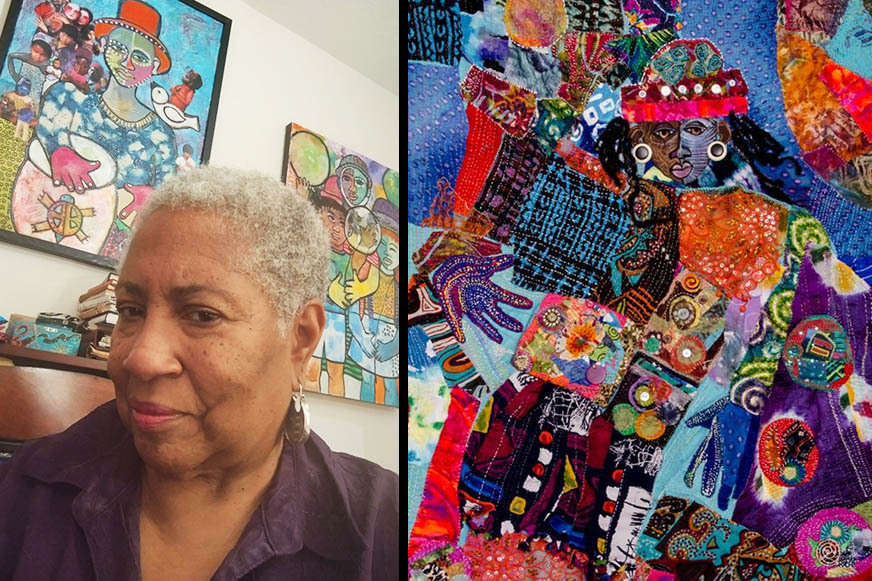
Aqui-Brooks who lives in Wesley Chapel will be giving one of two quilt workshops by Florida quilters offered at the museum in conjunction with the Black Pioneers exhibit. In a workshop entitled Fanciful Faces from 1-3:30 pm on November 5, the quilter artist will help participants create their own 9 x 12 mini quilt featuring creative faces inspired by Aqui-Brooks’ own work.
In her workshop Photo Memory Quilts on October 22 from 10 am-5 pm, Lauren Austin of Maitland will show participants how to create an art quilt using family photos and keepsakes. In her work on display, called View From the Camp Table, she includes letters and a photograph, imagining that they would be what a Buffalo Soldier might have carried with them into war.
In both cases sewing experience is helpful but not required.
“We have always been contributors in so many ways to the fabric of this country,” says Mazloomi, “African Americans have been explorers, they’ve been business people, they were cowboys, they’ve been part of the fabric of every facet of this country and people will see that through the quilts.”
. . .
University of Tampa Grad Nneka Jones
in TIME Magazine
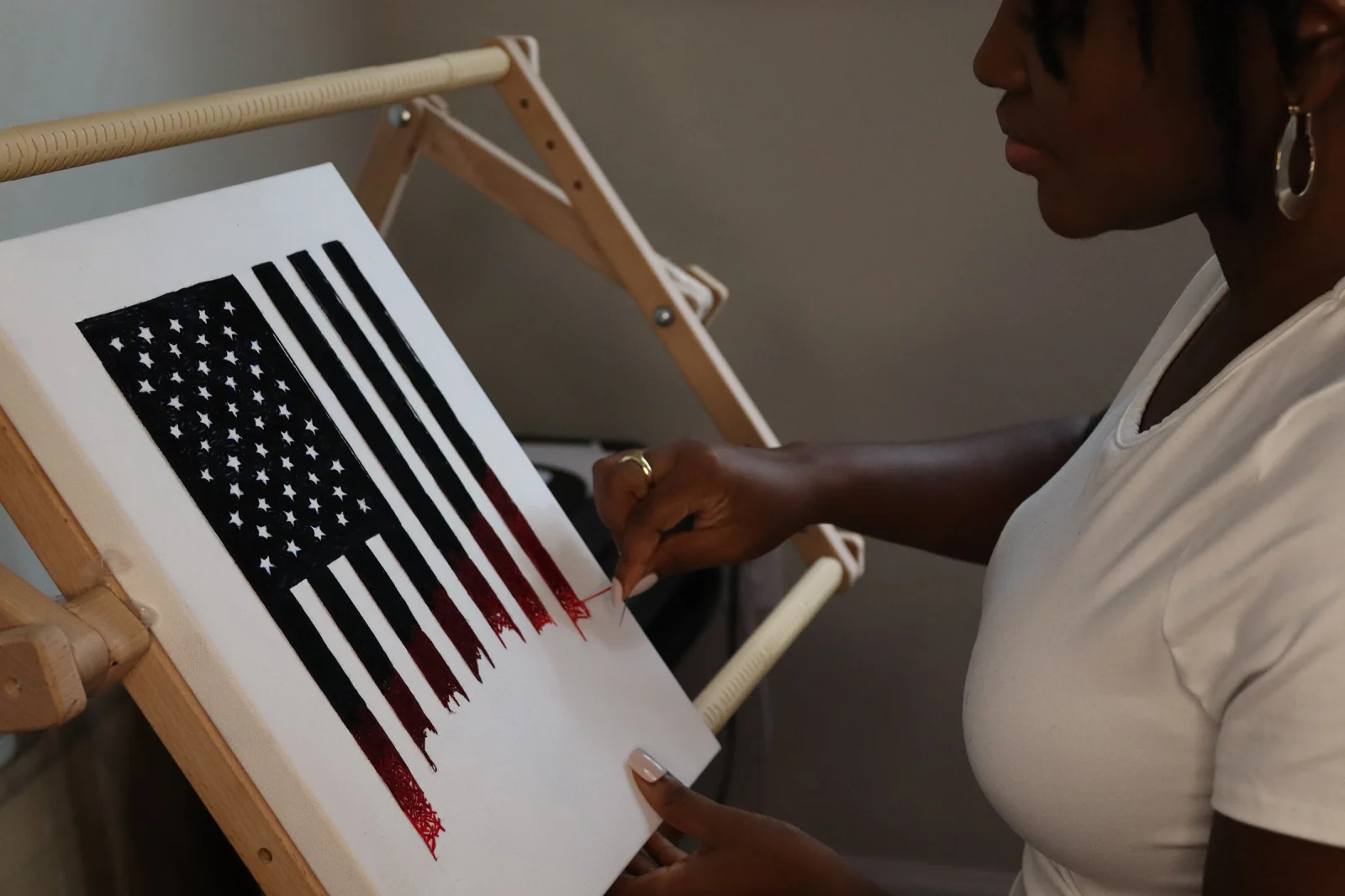
Nneka “Anyeka” Jones, a Trinidadian-born artist who is a University of Tampa graduate, works in mixed media, embroidery, textiles and paint to comment on social and environmental injustice and advocate for the protection of women and girls of color.
Graduating from the University of Tampa in 2020, the then 23-year-old was asked by TIME to produce a hand-embroidered flag for the magazine’s August 31/September 7 issue to illustrate Pharrell Williams’s article “The New American Revolution: Visions of a Black Future That Fulfill a Nation’s Promise.”
To create the piece Jones stenciled the outline of the stripes onto canvas and hand-embroidered them with black thread. The white stripes in between are raw canvas. Similarly, the stars are the white of the canvas and she hand-embroidered the black around the stars.
“Every time she pushes the needle through the canvas, it’s an act of intention that mirrors the marching, the protests, the push to form a more perfect union,” TIME’s international art director Victor Williams says in magazine’s description of the commission. “It’s deliberate. It’s painstaking. It’s long. It’s hard. Each one of those stitches is a single person’s story, a single person’s travails. That’s why we wanted to make the stitches visible.”
Jones can attest to the hard part – her fingers got torn up and sore from sewing this portrait in about 24 hours to meet the magazine’s deadline. Such pieces usually take a week to a month to produce.

The now 25-year-old’s art is included in the permanent collections of the Florida CraftArt Gallery, Ferman Center for the Arts at the University of Tampa and the Tampa Museum of Art, including embroidered portraits visualizing the ways young girls of color experience the destructive effects of human trafficking and sexual abuse.
Check her work out on her website artyouhungry where she offers a book on her work for sale – Nneka Jones (Targeted Truth): Threading the Reality of Society.
. . .
Wearable Art 16 at DFAC

In August the Dunedin Fine Art Center finally held their annual Wearable Art show — which had been put on hiatus for two years during the COVID pandemic. Dubbed a Sweet 16 event, it was the 16th time the center had held the popular event since its launch 18 years ago.
. . .
This year’s Wearable Art show kicked off with The League of Extraordinary Kings and Queens by designer Lina Teixeira featuring men in sheer garments and face masks and women in designs with fringe, feathers and hats.
Rya DeMulder presented Evolution of Consciousness, which included a crocheted bodysuit and face mask and a fanciful headpiece. Neva Durham dressed a model as a Día de los Muertos skeleton while Frank Strunk III created a headgear that permanently positioned a cell phone in front of a model’s face.
Olga Saretsky’s Kikimora Studio created a tribute to Ukraine with a War and Peace collection. Adding vivid creativity were balloon artist Mark Byrne, Bay to Bay Wearable Art and Cindy Linville.
. . .
Fashion Design at The Dalí

Every year the Dalí Museum pairs artistic high school students (9th-12th grade) with experienced artists and designers for classes in fundamentals of design, construction and runway presentation.
This year’s Fashion Design program began on September 11, led by Patricia Donnelly, the department chair of the Design Technology Department at Pinellas County Center for the Arts at Gibbs High School. The students who were chosen for this free program are meeting on Sundays all semester long at PCCA. Guest speakers from the fashion industry and incursions to local Tampa Bay stores and production facilities are also on tap.
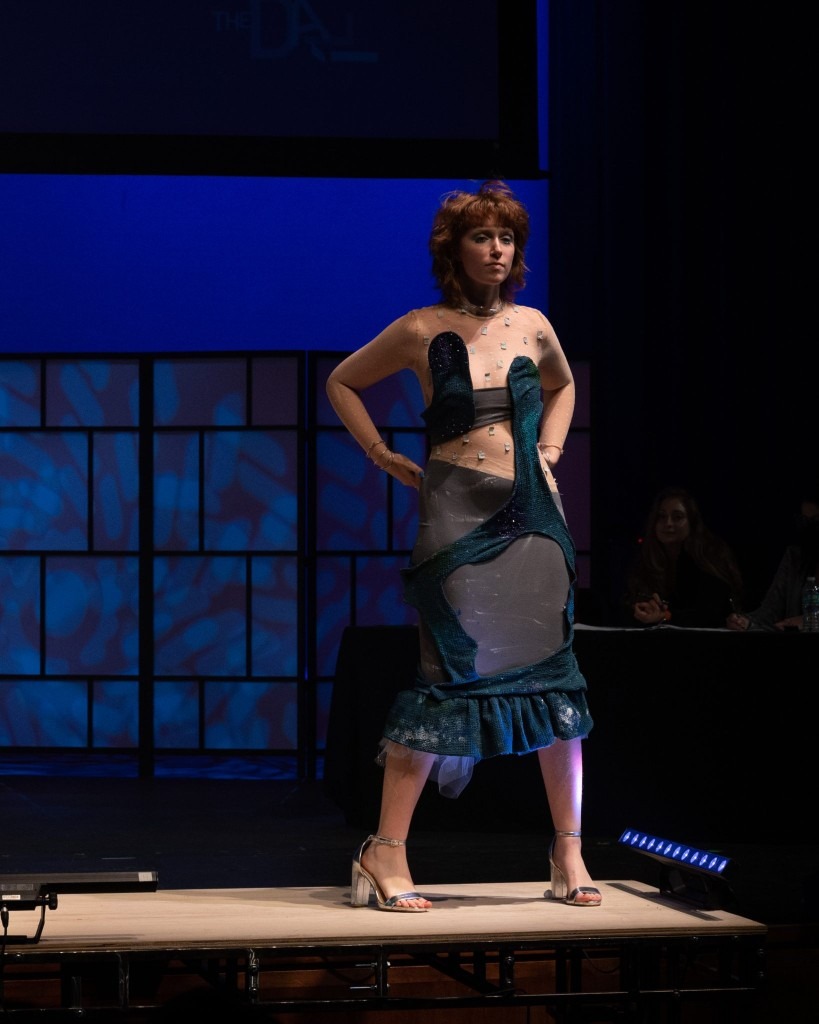
The theme for this year’s 14-week program is “The Shape of Dreams,” inspired by selected works at the Dalí Museum. Encouraged to use nontraditional materials, each student will produce a wearable work of art from sketch to runway.
. . . . .
Their designs, connecting the subconscious state of dreaming, fine art and fashion, will be showcased at a final runway event at PCCA-Gibbs High School on December 17, and at a benefit fashion show at Neiman Marcus in Tampa’s International Plaza on February 9, 2023. Selected designs will win prizes and be honored in a display at Neiman Marcus.
Last year the program’s theme was “Dalinian Architecture.” Check out the students’ sketches inspired by Dalí’s paintings and the Dalí Museum’s enigma windows that turned into runway creations here.
Gio Swaby: Fresh Up at the MFA
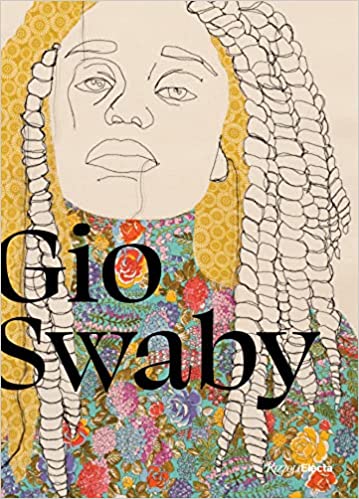
If you missed this exhibit, you still can pick up a copy of the show’s illustrated catalog, published by Rizzoli Electa, which features an interview between Swaby and Pulitzer-Prize winning writer Nikole Hannah-Jones. And, thanks to a donation by art collector James G. Sweeney, the Museum of Fine Arts has acquired one of Swaby’s life-size portraits from her Pretty Pretty series for its permanent collection.
The MFA exhibit featured seven portrait series of Black women created by the Bahamian artist from 2017 through 2021, including My Hands Are Clean, Love Letters and Pretty Pretty, as well as 15 new works. Curated in collaboration with the Art Institute of Chicago (AIC) which is where the show is headed next, the exhibit was dismantled a week before its scheduled closing date because of the threat of Hurricane Ian.
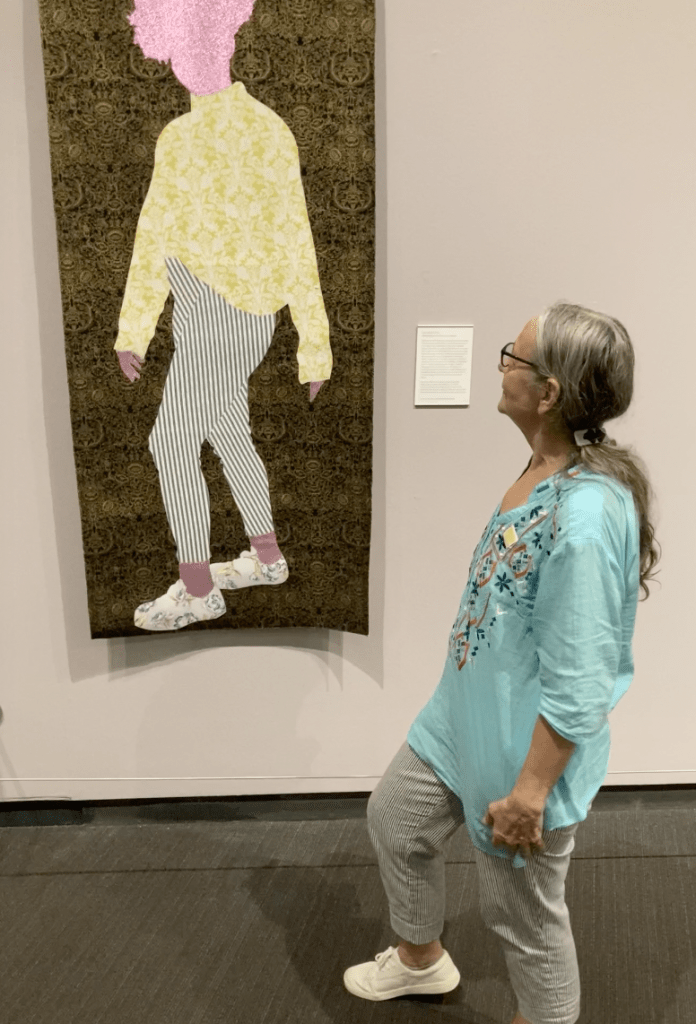
Each portrait in the show began with a photograph of a Black woman which Swaby transformed into a textile portrait, complete with hair, clothing and jewelry, using thread.
By choosing materials traditional associated with domesticity (Swaby’s mother also was a seamstress), Swaby’s work not only gives a nod to that labor but uplifts it into monumental works of art.
. . .
In this interview Swaby talks with the MFA’s curator of contemporary art Katherine Pill (who also contributes an essay to the catalog) about her work, which Swaby describes as a love letter to Black women’s personal style, strength and beauty.
. . .
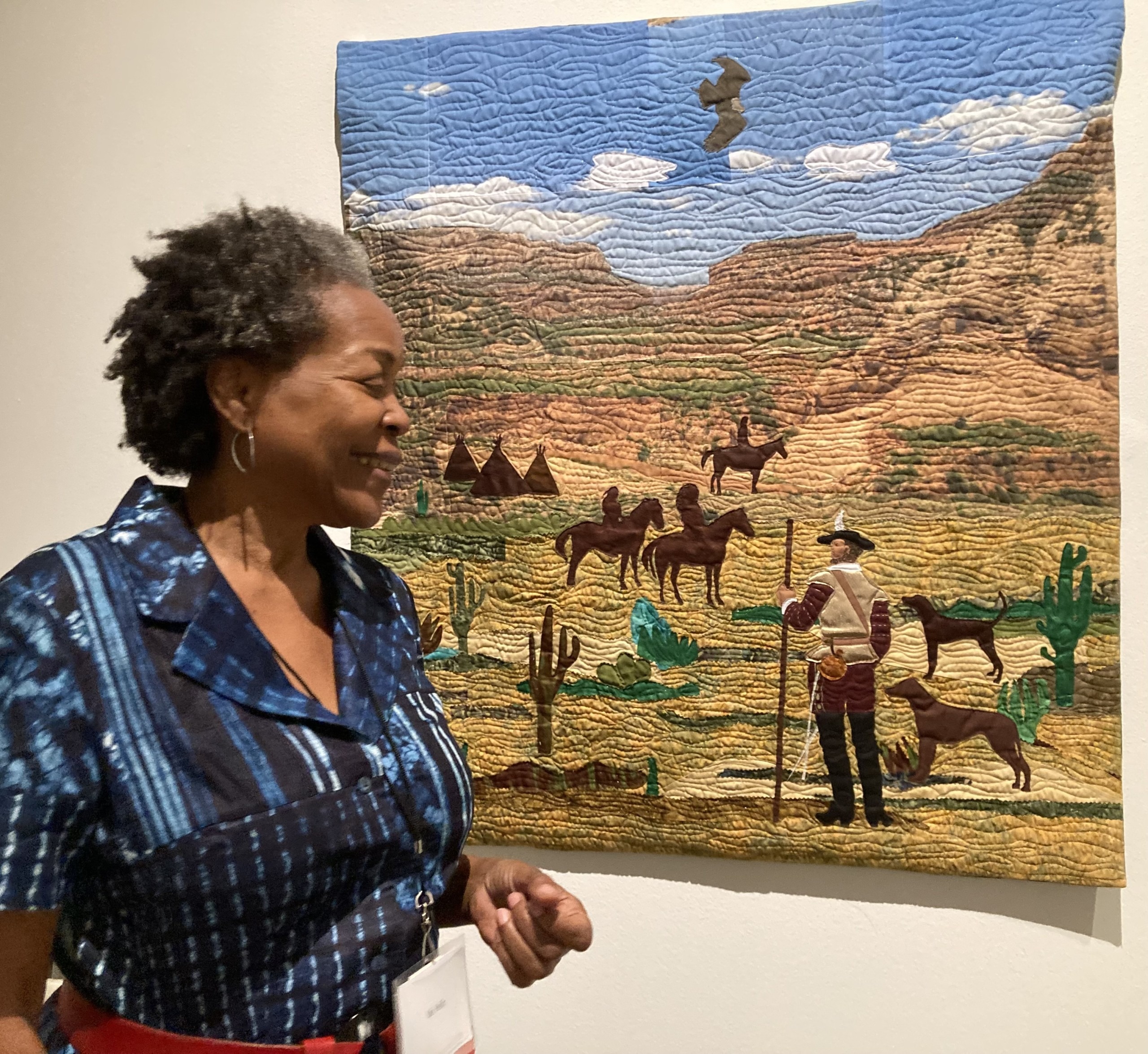
. . .

